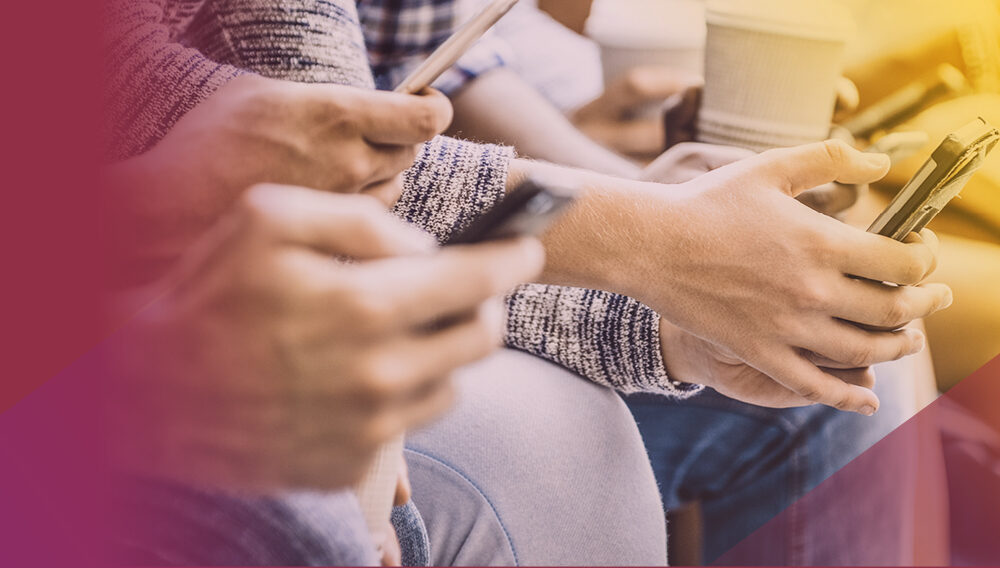Why Social Media Addiction is a Real Thing and the Dangers Associated with it

Social Media has radically changed society as we know it. A 2020 documentary on Netflix, “The Social Dilemma,” takes a stance on exploring the dangers associated with social media and what can be done to prevent them.
Can someone be addicted to social media?
The majority of the dangers associated with social media stem from the idea that social media, like recreational drugs, sugar, etc., can be addicting. Social media allows humans to interact and form relationships on a grander level than ever before possible, connecting users across the globe in real-time. Relationships, whether in person or parasocial, are based on an individual’s attachment style. Attachment theory is a psychological theory that was developed in the 1950s and hypothesizes that the “affectional tie that individuals develop between themselves and another specific person is not based solely on food, safety, and other survival needs. Humans and other social animals need more—mainly love, affection, and acceptance.”
There are studies to suggest that how people use social media and how much information they make publicly available relates to their attachment style in relationships. If you are in healthy and secure relationships, you use social media very differently from those who are in more unhealthy circumstances. Those who have toxic attachment styles use social media in vastly different ways even from each other. If someone has high attachment anxiety, they struggle with abandonment, are overwhelmed by emotion, tend to pursue someone emotionally unavailable, and will likely be oversharers on social media and try to compensate for what they do not find in in-person relationships. Those who have high attachment avoidance, who avoid intimacy, who push others away, and tend to not trust, are not typically active social media users. Both types of attachment anxiety have shown a significant positive association between the attachment and a dysfunctional use of the internet and social media sites.
Who is most as risk for a social media addiction?
This leads to the question of whether there is a particular personality type that is more susceptible to parasocial relationships. I’m not a psychologist, so at some point, this can seem to get over my head, but it is not a far leap to assume that those who do not have healthy interpersonal relationships seek them out on the internet, and thus are more susceptible to the dangers that can be associated with parasocial relationships.
The same studies that look at attachment theory as it relates to social media use can be used to predict social media addiction. Those who are deeply preoccupied about relationships tend to use social media as a therapy tool, a place where they can find the emotional support lacking in their day-to-day lives. When this many people who are like-minded use a platform such as TikTok, where they crave the immediate response and attention you can get uniquely from social media, it is no wonder that society, or this subset of society, is obsessed or consumed by topics like true crime and high-profile cases.
An age group at risk for social media addiction is young adults and preteens, and given the increased access to technology and social media that this age group has, social media also creates a bigger risk for cyberbullying and mental health concerns. Prior to the rise of social media, cyberbullying existed but was not as widespread. According to a 2018 article, 58 percent of teens or preteens admitted to being cyberbullied or harassed online, a number that has only increased throughout the COVID-19 pandemic. Social media amplifies the effect of cyberbullying. Interestingly, a study by the University of Georgia suggests that increased hours spent online, and on social media platforms, results in higher social media addiction scores (at least in males), significantly predicting perpetration of cyberbullying.
Social media is an entirely different culture for many, particularly youth. There is a separate set of societal norms associated with interacting with their peers on social media as opposed to in person. With the anonymity of social media and the ability to avoid retaliation, perpetrators feel less remorse for their actions and are held less accountable with consequences for their behavior. In what may be the largest dopamine hit readily available, many perpetrators will feel rewarded from the likes, comments, and shares that their actions on social media receive, even if they are aggressive or bullying in nature, which in turn will cause them to want to continue the behavioral pattern, and this can border on an addiction.
In addition, individuals who have certain psychiatric conditions may be more susceptible to internet addiction, and in particular, social media addiction. Individuals with conditions such as obsessive compulsive disorder (OCD), attention hyperactivity deficit disorder (ADHD), or other mood disorders are more likely to report excessive use of social media than their neurotypical peers. A study conducted in Norway suggests that those with ADHD are more likely to engage in excessive social networking as a form of self-medication, similar to those with anxious attachment styles. Whereas, those with OCD are driven to addictive social media use due to a “constant urge to check their networks for updates or fear of missing out (FOMO)”.
So, what can be done to reduce social media addiction? A full-scale drawback seems futile for society at this point in time. Certainly, there needs to be a larger discussion around safeguards and monitoring of social media use. As society continues to address mental health, there’s opportunity for conversation about appropriate restriction and use of social media.


